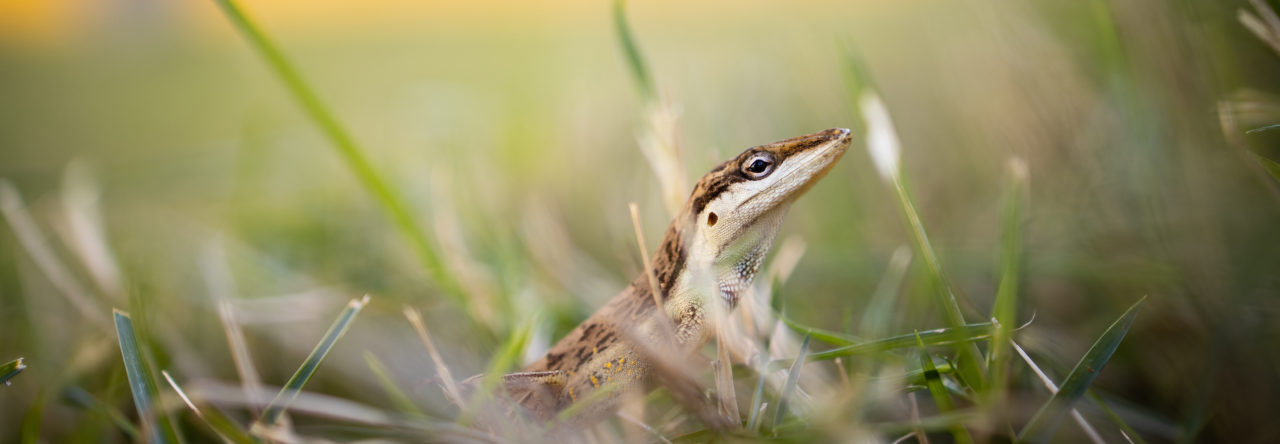Tobias Uller at Lund University is studying phenotypic plasticity in anoles to address the evolutionary significance of such plasticity. He’s interviewed at David Sloan Wilson’s site, This View of Life. The whole interview is interesting, but here’s the snippet on anoles:
One of my projects, with evolutionary developmental biologist Nathalie Feiner, will test if plasticity shaped diversification of Anolis lizards. These lizards are textbook examples of an adaptive radiation because, across the Caribbean, a single species gave rise to multiple species, each locally adapted to a different habitat. We are particularly interested in limb morphology since it is a defining feature of adaptive differences between species; lizards that run around on broad surfaces, such as tree trunks, have longer limbs than those who cling onto twigs, for example.

Anolis equestris. Image used with permission of Tobias Uller.
We already know from work by Jonathan Losos and others that limb growth is plastic in Anolis. What we do not know is if evolutionary diversification of limbs took place through modification of those particular components of bones that respond to mechanical stress during growth – as would be predicted if plasticity ‘took the lead’ in evolution – or if adaptive divergence between species is unrelated to plastic responses within species. To test the concordance between plasticity and evolutionary diversity we rear a lot of lizards from several species on different surfaces and combine this with detailed measures of skeletons of very many species across the entire Anolis group.
We should also remember that plastic responses in some cases can carry over to the next generation. In experiments on water fleas, which have the advantage that they can reproduce clonally so we can rear genetically identical individuals in the lab, we will test the hypothesis that such maternal effects (or non-genetic inheritance) facilitate adaptation to new environments. In some ways, this works just like plasticity within a generation. That is, successful accommodation of environmental stressors enables populations to persist and gives natural selection something useful to work with, thereby providing directionality to evolution.
But here there is another twist that has to do with the evolution of inheritance. As populations adapt, selective removal of costs and negative side-effects should make maternal effects behave like signals, sent from mothers to tell offspring about the environment they are likely to encounter. This process, therefore, describes the evolution of a type of inheritance system.
We cannot study the conversion of an environmentally induced stress response to a detection-based inheritance system in the lab. But we can compare water flea populations that have been exposed to the same stressor, such as metals or toxins, for a different number of generations in the wild. Ultimately, this should give insights into how inheritance systems evolve and how they come to transmit information.


























